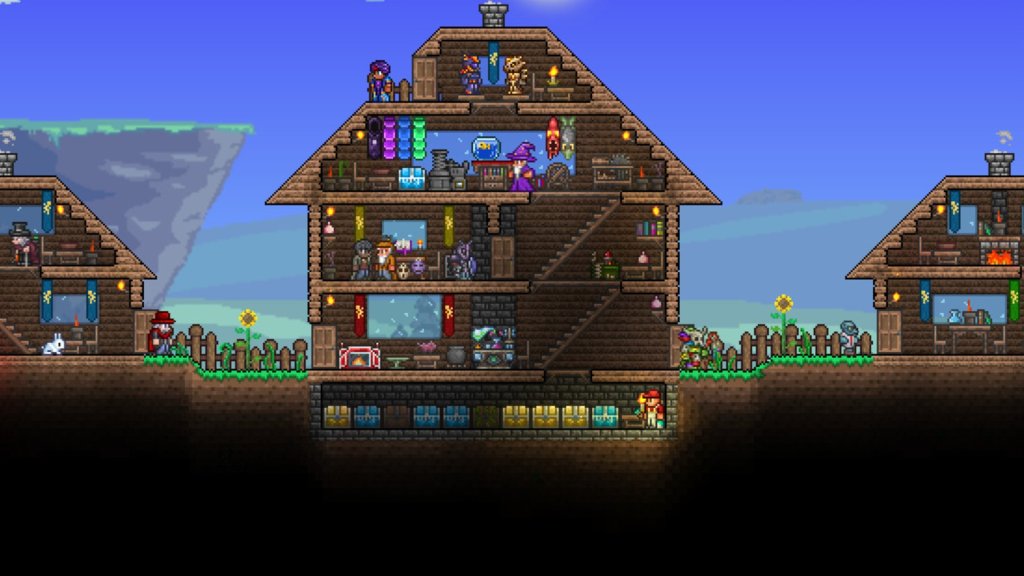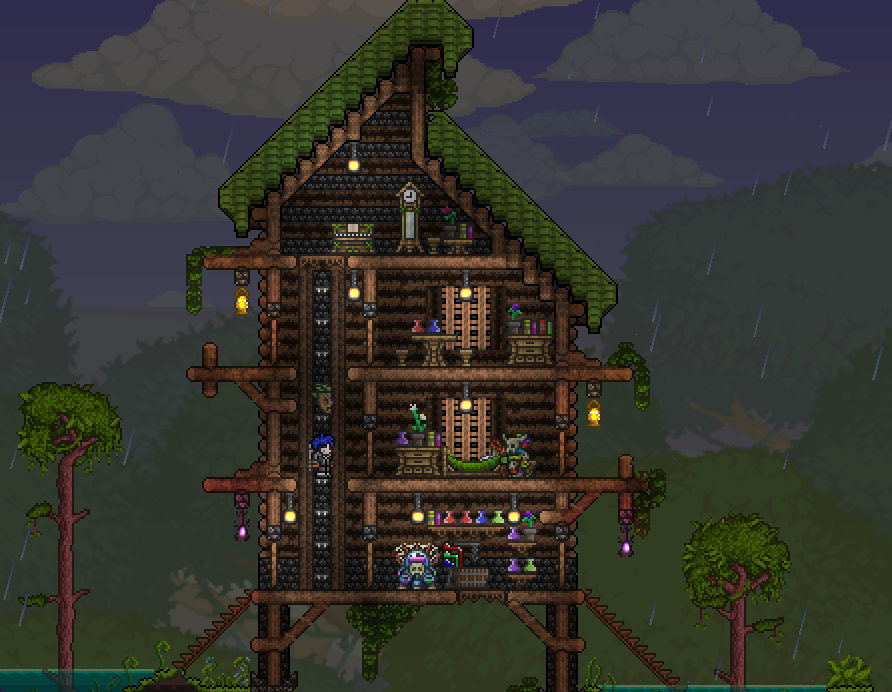Many are afraid of whether their house is a valid dwelling in terraria or not. Whether you’re a newbie or an expert in Terraria, a valid house is essential to meet the game’s requirements and for NPC occupancy and progression.
So, how do you check and ensure your house’s validity in Terraria? Confused, don’t worry, we got your back. We have listed how to make a proper house structure, from furniture positioning and lighting to background walls; everything mentioned will ensure your house is valid.
So why wait for more? Let’s explore to make a house for NPCs and make the most of your terraria adventures.
Valid House in Terraria: An Overview

A valid house In Terraria is necessary to allow NPCs to move in and let you enjoy their valuable services. But how do you make or ensure validation of an existing house? For a house to be valid, it must meet some requirements; explore below to know about the factors in detail.
- Minimum Size: Your house should possess a 6-block height and 10 blocks. This is necessary to provide enough space for NPCs to live comfortably.
- Walls: Ensure your house has a wall background and not anything else. However, wall material can be anything like wood, stone, and more. Remember, it shouldn’t have any gaps or holes.
- Doors: Remember to use at least one wooden door in your house. It can be anywhere in the background wall or on the floor for NPCs to enter or exit.
- Light Source: Place a light source, such as a torch or lantern, within your house. This not only prevents monsters from spawning inside but also makes your house a safe space for NPCs.
- Furniture: It’s necessary to have suitable furniture items like a table or wooden bench, a chair, and a bed. Further, positioning matters for furniture, so make sure you place them correctly.
Common Mistakes in Building Terraria House
Making a valid house in Terraria is a bit tricky, leading to several mistakes that otherwise wouldn’t happen. Here is a list of the most common mistakes players frequently make; chill, we’ll provide you the solution for the same.
- Background Wall Gaps: First and foremost, there shouldn’t be any holes or gaps in your house’s background walls. Remember, even a single missing background wall block can lead to the invalidation of your house.
- Improper Room size: The most frequently done mistake in the whole list. You need to ensure your house isn’t too small; it won’t be a good fit for NPCs. As said, your rooms should have 10 blocks in height and 6 blocks in width.
- Furniture Placement: Players often forget to place one or the other furniture in the house. To avoid this, ensure your house has a table, chair, and a bed or dresser in the proper position. Further, check for the orientation of the table and chair; NPCs won’t move if they are facing in the wrong direction.
- Lighting Issue: NPCs wouldn’t move in insufficient light. Double-check for a light source (torch or lantern) within the house. Avoid too much background lighting from outside sources; it sometimes causes issues.
- Doors: Confirm that the door is functioning properly. It’s necessary as NPCs use doors to access your house. Further, ensure it’s in an appropriate position so that they can open and close freely.
- Location: Ensure you don’t make a house within Corruption or Crimson biome areas; it’s problematic, being an invalid location. Use a clean area or purification powder to clean the land.
Terraria Experts’ Housing Techniques
Want to be a seasoned player in Terraria? A valid house is a must, but housing techniques are what earn you a tag of ‘Seasoned Terraria Player.’ Here are the techniques that can make your housing game look like a pro:
- Themed Housing: Make houses based on unique themes and biomes. Use suitable construction materials, furniture, and decor items to stand out in terraria. Think about a jungle-themed house with bamboo furniture and leafy walls. Isn’t it unique? If you also want to make amazing Terraria house design ideas, play around with the theme.
- Multi-Storey Houses: Create multiple floors with different rooms on each level. Skillfully use platforms, stairs, and elevators to provide easy access to NPCs. This will look impressive while maximizing the space.
- Warehouse: Make storage rooms in your house with labels for easy resource management. Try to use frames or signs as labels; this not only looks cool but also backs up easy access to materials.
- Defense: The most significant aspect of an advanced house in Terraria. Add traps and other defensive equipment to protect NPCs from invasions. Skillfully place dart traps, spear traps, and lava moats to defeat enemies before they reach your NPCs.
- Teleportation network: A part of dense; create a network that allows quick movement of your NPCs between different areas of your Terraria world. This further ensures convenience to check NPCs or access to different biomes.
- Sky Islands: Build houses on floating islands in the sky; it looks adorable. Make sure you provide bridges or teleporters to access.
- Underground and Natural Landscaping: Play with different underground housing to make a unique hidden dwelling. For adding a natural touch to your terraria house, build houses around hillsides or caves
Conclusion
A valid house is necessary for Terraria as it backs NPCs to smooth in and out and teleportation, hence allowing them to provide their services. You can check whether your house is valid or not by referring to the above. If you have any queries, feel free to ask, we’ll resolve them promptly.
If your house entails all the aspects mentioned above properly, your house will be considered valid, allowing NPCs to move in. If you want to check for validity, visit the “Housing Query” feature in ‘Inventory.’
Do share in the comments what theme house you have in Terraria.

